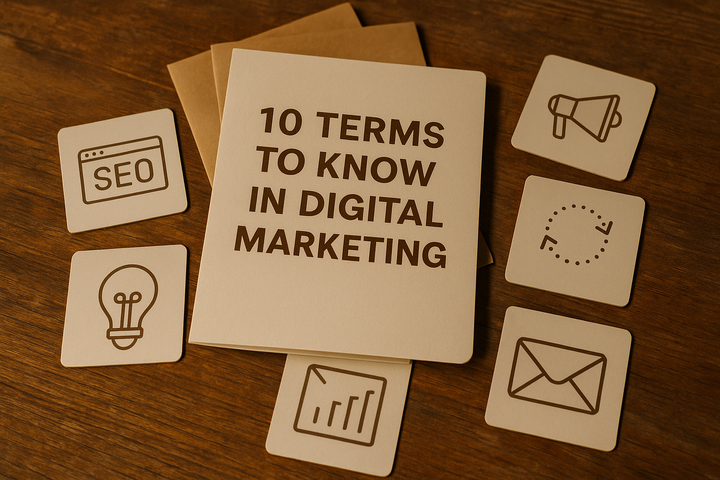How Digital Marketing Is Different From Traditional Marketing
Discover how digital marketing is different from traditional marketing, from targeting precision to relationship building, and why trust and data now drive brand success in the digital era.

In the world of marketing, the only constant is change. Every decade rewrites the rules, but nothing shook the foundations quite like the rise of digital marketing. Many still ask, sometimes in a boardroom whisper and sometimes yelling across meeting rooms, "How is digital marketing really different from traditional marketing?" Let’s call it out as it is. The difference is not just about the tools or the channels. It is about the entire mindset shift. And if you still think it is just about being online versus offline, you are already playing catch-up.
Marketing used to be about throwing a message into the world and hoping it stuck. Billboards, TV ads, newspaper spreads, cold calls — all heavyweights of traditional marketing — played by that rule. You paid big, you prayed bigger. You controlled the message, but you had no clue who really listened or cared. Fast forward to today. Digital marketing flipped that playbook inside out. Now, you do not shout at your customers. You speak with them. You listen more. You adjust mid-game. You are no longer broadcasting; you are having conversations in real-time.
And honestly, if you are not adapting to this new flow, you are slowly fading into the noise.
The Power of Precision: How Digital Marketing Targets vs Traditional Marketing
In traditional marketing, targeting felt like standing at a busy railway station with a megaphone, hoping the right person heard you. You could segment audiences to an extent, like choosing a business magazine over a teen gossip one, but control ended there. Even the best campaigns relied heavily on faith and forecasts.
Digital marketing took that chaos and introduced sniper-level precision. With tools like Google Ads, Meta targeting, and SEO, you are no longer shouting in a crowd. You are sitting down across the table from exactly the person you want, at exactly the right moment. You can target based on age, location, interests, behaviors, and even recent online searches.
Moreover, you can measure every click, every scroll, and every second spent. This visibility allows brands to constantly tweak their strategies. Traditional marketing rarely offered such immediate feedback. You printed a newspaper ad, and you waited, hoping phones rang or doors opened. In digital, you launch a campaign in the morning and optimize it by lunchtime. It is ruthless. It is fast. It is not for the faint-hearted.
So if you are still spending your budget on "hope marketing," the question is not if you will lose relevance, but when.
Cost, Speed, and Agility: Why Digital Marketing Leaves Traditional Methods Behind
Ask any veteran marketer about the cost of a prime-time TV ad, and watch their face tighten. Traditional marketing demands massive investments, long lead times, and has no forgiveness for mistakes. Once you publish a print ad or release a TV spot, you cannot tweak a typo or change a weak message. It is out there, haunting you.
In contrast, digital marketing moves at the speed of thought. Got a better idea after launching an ad? Update it. Spotted a spelling mistake? Fix it. Found a new audience segment? Target them right away. You can pivot without burning your entire budget. You can even A/B test different versions without anyone noticing.
Digital marketing levels the playing field. A small brand with a smart Instagram strategy can outshine a large brand stuck in old-school habits. The cost to reach 1000 people online is a fraction of what traditional methods charge, and the return on investment is often exponentially higher.
But, and it is a big but, digital rewards only those who are fast, flexible, and brutally honest about what is working and what is not. Nostalgia for the good old days is not a strategy. It is a liability.
Relationship Building: How Digital Marketing Creates Two-Way Engagement Unlike Traditional Marketing
Back in the traditional era, customers were passive spectators. Brands performed their song and dance, while customers watched from the sidelines. There was no easy way to talk back, leave feedback, or publicly call out a poor experience. The relationship was one-way, controlled, and frankly, a little arrogant.
Today, digital marketing tore down the velvet rope. Customers now have megaphones of their own. Through social media, reviews, and direct messaging, customers are not just participants. They are co-creators of your brand’s story. They celebrate you when you deliver. They expose you when you fall short.
This two-way engagement means brands must be authentic, responsive, and genuinely care. You cannot hide behind a catchy slogan anymore. You must show up every day with value, humility, and a willingness to adapt. Digital marketing makes relationships messy but beautiful. It rewards brands that listen more than they speak and punishes those who treat customers like statistics on a quarterly report.
And if you think you can survive today’s market without building real relationships, you are living in a fantasy straight out of a 1990s advertising textbook.
Trust and Data: The New Currency in Digital Marketing Compared to Traditional Marketing
In traditional marketing, trust came from brand image built over decades. A familiar jingle, a smiling celebrity, a glossy magazine ad — that was enough to reassure customers. Data barely entered the conversation except during expensive market research studies done once a year.
Now, data and trust are everything. Digital marketing offers a river of real-time information. You know what customers click, what they skip, what they comment, and what they share. This data can either become your secret weapon or your biggest vulnerability. Collecting data without respecting privacy will backfire. Customers today are smarter, savvier, and more skeptical than ever before.
Building trust digitally means being transparent about how you use data, offering real value in exchange for attention, and constantly delivering on promises. It is no longer about slick slogans. It is about honest conversations backed by evidence.
If your digital marketing strategy is not rooted in ethical data use and trust-building, no amount of fancy graphics or viral reels will save you. Trust is the real SEO today. Trust is the new brand loyalty.



Comments ()